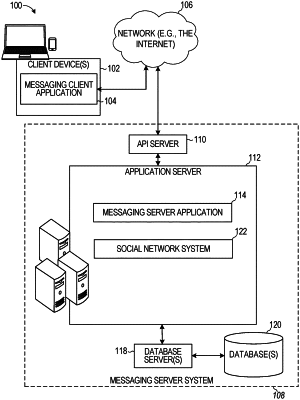| CPC G06Q 30/0613 (2013.01) [G06F 16/9536 (2019.01); G06Q 20/065 (2013.01); G06Q 20/12 (2013.01); G06Q 20/367 (2013.01); G06Q 30/0625 (2013.01); G06Q 30/0641 (2013.01)] | 20 Claims |

|
1. A method comprising:
retrieving a markup language file associated with a third-party application and executing the markup language file by a first application;
establishing a communication bridge comprising two one-way communication channels between the third-party application and the first application, the communication bridge enabling messages to be exchanged between the third-party application and the first application;
receiving, using an application programming interface (API) function of the first application associated with a purchase transaction from the third-party application, a request, via the communication bridge, to perform an ecommerce transaction in relation to an item associated with the third-party application;
accessing a database that stores expected attribute information for multiple items by obtaining a list, maintained by the first application, of items associated with the third-party application and corresponding expected costs and identifying the item and the corresponding expected cost in the list;
determining, by the first application, that a cost of the item specified by the request is within a predefined range of the expected cost associated with the item in the list obtained by the first application; and
processing, by the first application, the ecommerce transaction in response to successfully verifying that the cost is within the predefined range by accessing a virtual wallet maintained by the first application and deducting the cost of the item from the virtual wallet.
|